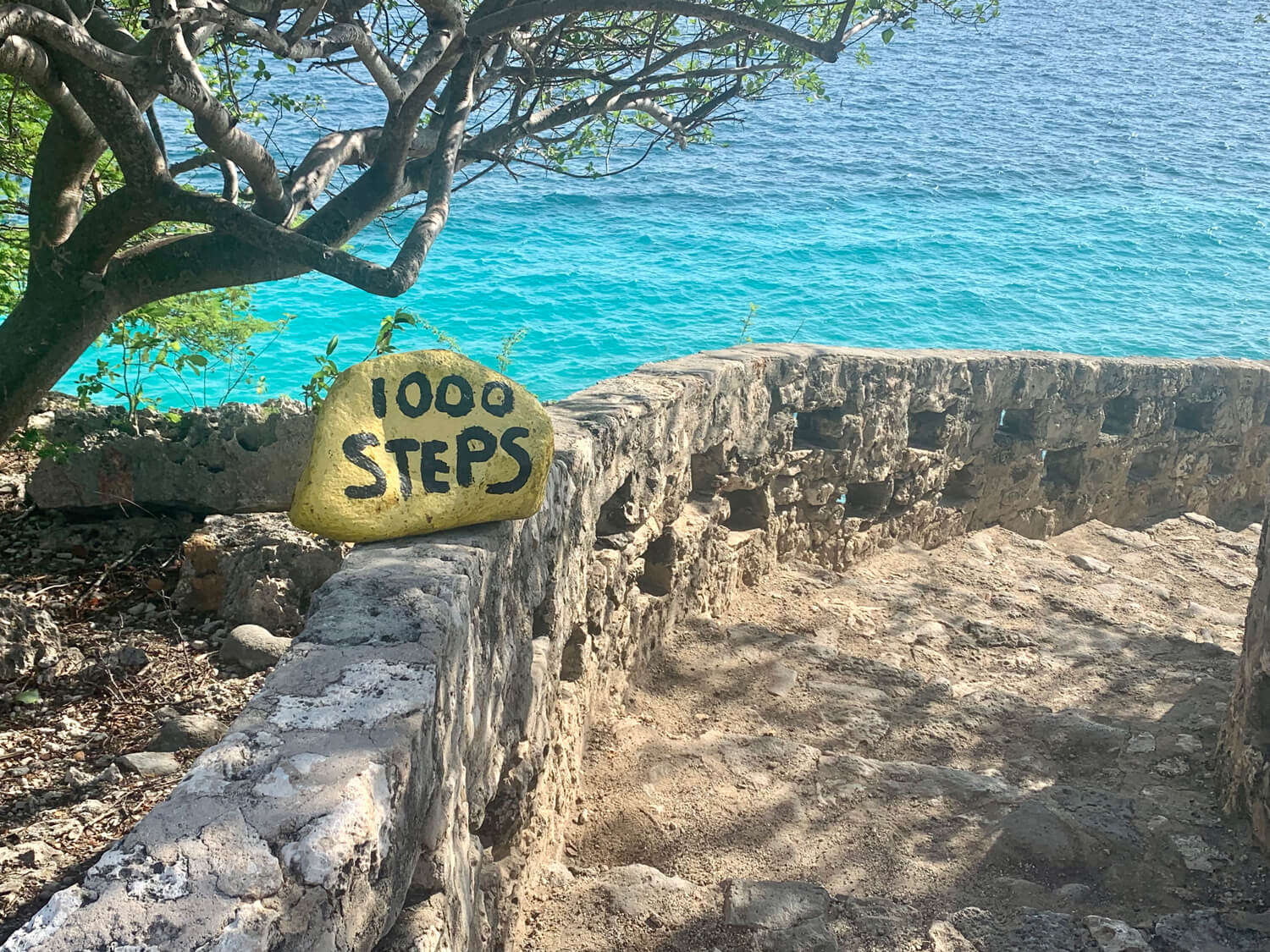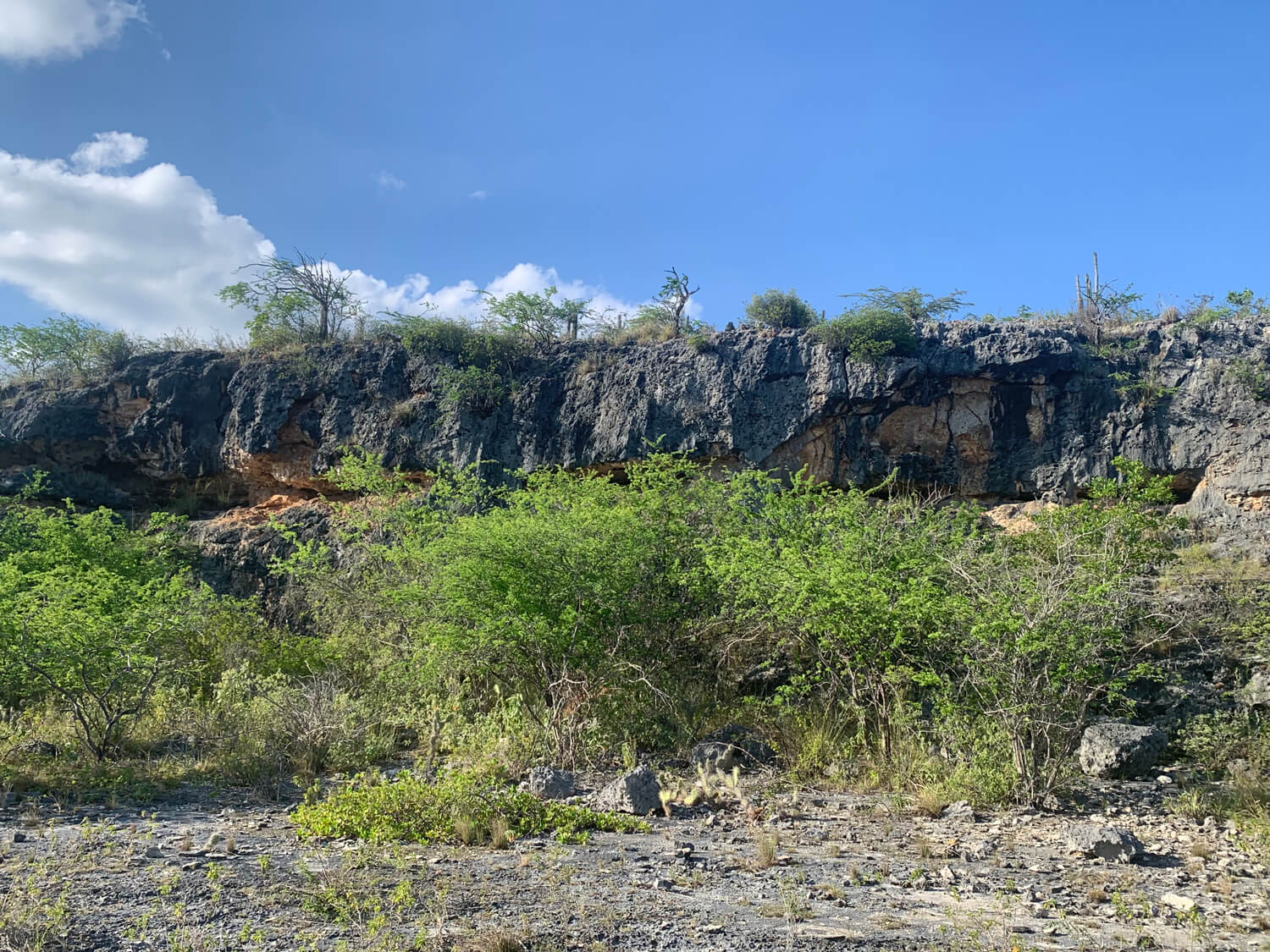7x De mooiste duikplekken op Bonaire
Bonaire is the capital of the world when it comes to shore diving. Nowhere else are there so many first-class dive spots accessible directly from the coast. Bonaire’s dive spots are easily identified by large yellow stones on the shore and buoys in the water.
These are the 7 most beautiful dive spots of Bonaire according to our friends at Dive Friends:
1# Hilma Hooker
Bonaire’s most famous shipwreck is probably also its most popular dive spot. In any case, it is one with an interesting history.
There are several stories about what caused the Hilma Hooker to sink. The most obvious one is that the boat had problems with the rudder while sailing along the coast of Bonaire. While towing the Colombian-born boat, the Coast Guard learned that the boat did not have the proper papers and was under the spotlight of both the FBI and Interpol. The story takes an exciting turn when it becomes clear that the Hilma Hooker is suspected of drug smuggling. Upon inspection, a whopping 11,300 pounds of marijuana are seized and the crew arrested. The boat is moored at the Kralendijk pier for a long time and begins to fill with water. Out of fear that the Hilma Hooker would sink and stop maritime traffic, the boat was towed to an anchorage just outside Kralendijk, the spot where she sank the next morning and is still there. The entry to the spot can be found opposite Trans World Radio.
The wreck lies on a sand bed between two coral reefs, as if it were planned. In any case, it is convenient for the diving world. With its 72 meters in length, there is plenty to explore here for divers of all levels
Be careful when entering the boat. The boat was not stripped before she sank so there are many places where you can quickly get into trouble.

2# 1000 steps
1000 Steps is a must visit for both snorkelers and divers when you are on Bonaire. You have to be prepared to make it to the entry. To get to the spot you have to go down a long limestone staircase with your diving equipment. The stairs don’t have 1000 steps but it feels like it when you have to go up again with your wet dive gear, hence the name.
The coral reef starts almost right at the shore with a mix of hard and soft corals. The beginning of the drop off is marked by a strip of white sand that makes the water in the bay glow turquoise. Just past the boat mooring buoy, a steep wall of coral begins with vertical sand channels and pillar-shaped coral mounds. Lots of coral means lots of life. You’ll encounter all sorts of things here: sponges, barracudas, different types of jacks, parrot fish, moray eels, trunkfish and Caribbean lobster are also regularly seen here.
1000 Steps is popular with snorkelers because it is high on the hot list for spotting green sea turtles. Actually, it is always a hit. From time to time even manta rays and whale sharks are spotted here. So don’t skip this dive and see if you are one of the lucky ones.

3# Karpata
Karpata is one of the most northern dive sites before the Washington Slagbaai National Park. The road to it alone is worth the drive. The road is not called The Queens Highway for nothing.
This spot is very popular with snorkelers and divers. The back of the reef starts at 7.5 meters and is full of hard and soft corals. You’ll find deer horn coral, moose weed coral and star coral, among others. There are also large elephant ear sponges to be found. The reef extends to a depth of about 46 meters but the best diving is above 24.5 meters.
The reef is full of deep crevices where there is a good chance of spotting a Caribbean lobster or a large moray eel. You’ll also often come across large rainbow parrotfish and schools of Caribbean squid.
Also for the spotting of sea turtles you have come to the right place. Karpata is the place to spot baby and young adult turtles. Say it yourself, who doesn’t get happy amongst baby animals?

Drive to your favorite dive spots in comfort
4# Red Slave
Red Slave is a dive spot for the Advanced Open Water diver. The spot is located near the southern tip of the island at the level of the former slave houses near the red column. Often the rough sea from the east side curls around the tip of the island causing strong currents and large waves. Take this into account when entering the water. For such dives it is advisable to take a spotter with you.
The dive is known for the fantastic coral wall that starts at a depth of about 9 meters. The wall is full of vertical channels whose bottom is sometimes covered with sand and sometimes with coral. The coral wall continues to about 51 meters deep after which it turns into sandy bottom.
The presence of the many corals and strong currents ensure that a wide variety of fauna lives here. Large schools of snapper and reef fishes are a sure thing. You also have the chance to see the bigger fish. Regularly large barracudas, spotted eagle rays and various species of sharks are seen here, including mostly nurse sharks.
5# Something Special
The name Something Special originated from the guarantee that you will see something special at this dive spot. Recreational sailing has damaged the coral on this spot and special fish can be found here. On the bottom sneak frogfish, scorpion fish, yellow-headed jawfish and sailfin blennies.
The area around Something Special is always very busy with recreational boating. Be careful when surfacing and stay as low to the bottom as possible during the dive. To the north the reef is interrupted by a sand channel. This is the time to turn around. This is where the channel of the Harbour Village Marina begins.
Before getting out of the water, it is worth swimming past the coral trees. These coral trees were “planted” by The Coral Restoration Fondation Bonaire for the growth of new coral. You’ll find them at the back of the reef at a depth of about 6 meters.
6# Salt Pier
The Salt Pier is a long pier with conveyor belt where large ships dock to load salt from the Cargill Salt Works. If you follow E.E.G. Boulevard to the southern tip of the island it is not to be missed. To the right of the pier you can get into the water relatively easily.
Although the Salt Pier is not known for beautiful coral reefs, it is home to many different species of fish. It is a raw site characterized by debris of industrial waste in which now many animals make their homes. The pier consists of seven platforms resting on long poles. Between each set of poles, it’s a surprise what you’ll find. Schools of snapper, hunting bar jacks, large barracudas and tarpons lurking in the shadows. An exciting dive it is for sure.
Snorkelers also fare well here. In fact, this spot is one of the favourites among snorkelers to spot sea turtles. On the right side of the Salt Pier you will find large areas of coral sandy bottom, this is the place to be. You don’t have to swim far because the turtles like to dwell in shallow water. This keeps them out of the hands of large predators. In the waters around Bonaire 5 of the 7 species of turtles can be found. Can you find them all?
NOTE: When a boat is moored at the Salt Pier, it is not safe and prohibited for divers and snorkelers to enter the water!

7# Angel City
Angel City is the place to spot several species of large moonfish. You’ll mostly encounter French moonfish and queen moonfish, but the rarer flameback moonfish has also been spotted here. Definitely worth a look!
Besides the beautiful moonfish, this site consists of a double reef separated by a narrow sand channel. In some places the coral has formed a bridge over the channel so navigation can be tricky.
The first reef is characterized by deer antler coral and a mix of hard and soft corals. On the second part of the reef you will find many large brain coral mounds, schools of snapper, horse-eye jacks, hedgehog fish and green moray eels.
Because the back of the reef of Angel City is only 4.5 meters deep, this is also a great place for snorkelers.
Contact us
Call us directly or send an email and receive a response within 24 hours!


 +31 (0)88 050 1810
+31 (0)88 050 1810 +599 701 7077
+599 701 7077